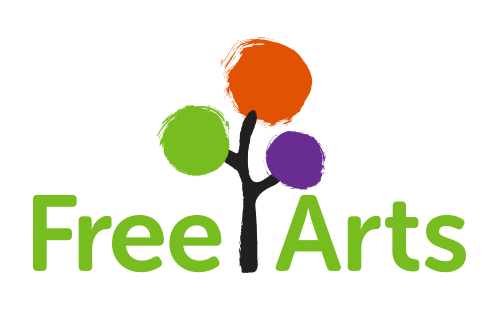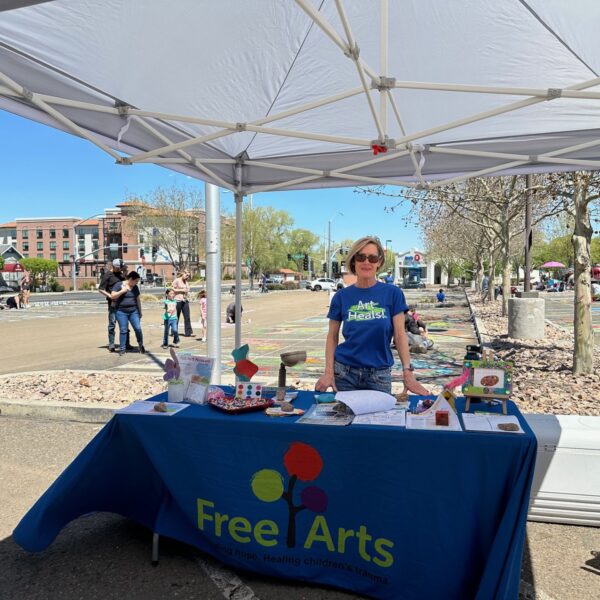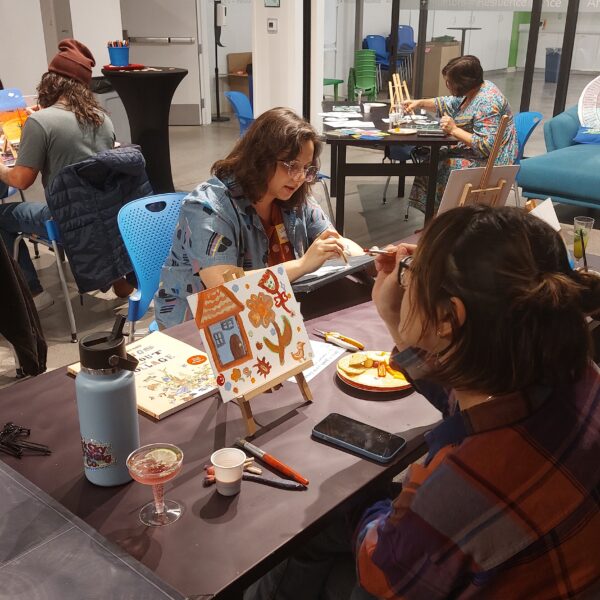By Michael Jung, Volunteer Mentor
You want to volunteer for an organization.
You’ve heard all about the benefits of volunteering. How it boosts your self-esteem and improves your health. How you can make friends and network. How you can learn new skills that will help you personally and professionally.
But how do you decide which volunteer organization is right for you?
It can be tricky. According to the National Center for Charitable Statistics, there are currently 1.56 million nonprofits registered with the Internal Revenue Service – each with their own missions, values, and goals for the communities they serve.
Recently, I joined a new volunteer organization – Free Arts for Abused Children of Arizona – and was struck by how well their recruitment process followed the best practices of a professional nonprofit, making it easy to decide this was a group I wanted to donate my time to.
So, using my own experience as a guide, here are five tips you should follow to find the best nonprofit organization for you.

1. Find a Volunteer Organization That Caters to Your Interests
Ask yourself first what community you’re interested in helping and what skills you’d like to use or learn while volunteering.
In my case, I’m passionate about working with children, love theater, and enjoy doing art projects. When I looked for nonprofits to volunteer with, I searched for “volunteer opportunities with children and the arts” – and saw Free Arts for Abused Children of Arizona appear on the first page.
When I visited their website, each page was covered with photos of smiling children and adult mentors painting, dancing, and beating on African drums. The organization’s mission, of healing abused and traumatized children by teaching them how to express themselves through art, fired up my curiosity. I had to know more – so when I saw I could attend a one hour, no-obligation orientation near me, I signed up.
Take some time to look at the websites that come up on your search. Does the organization’s mission statement come out clearly on their web pages – and does it resonate with you?
2. Attend Orientation – And See If It Inspires You
From the beginning, I was struck by how well the Free Arts coordinators communicated their mission of using the arts to build resilience in traumatized children. Free Arts’ vision was shared through the stories and videos they shared, which highlighted visions of children processing their trauma in positive ways by beating rhythms on a drum, composing poems, and discovering a love for singing.
I was also encouraged to learn that Free Arts’ programs are set up with the needs of volunteers in mind. Volunteers with busy schedules can participate in Free Arts Days, single-day programs where they help guide children through creative activities at local arts and culture organizations, from a tour of the Phoenix Art Museum to the Desert Botanical Garden.
Volunteers with more time can work with professional teaching artists for six to eight weeks in the Professional Artists Series, where they help build children’s self-esteem by teaching them skills in visual, musical, and performing arts. Volunteers can also participate in the Weekly Mentor Program where they work with the same group of children at shelters, foster care group homes, or treatment centers for 8 to 16 weeks.
The program that most spoke to me was Free Arts’ Camp Series –week-long day camps where volunteers serve as camp counselors for children learning to express their personal stories through acting, singing, and painting. Given my current schedule, this sounded like the perfect way to volunteer during the summer.
Be sure to ask questions during orientation to see if the organization’s programs fit your needs. What time commitment does each program require from you? Do you need to provide your own transportation? Will you be working with other volunteers or on your own? Finding the answers to these questions early on will ensure you have a more positive experience when you start volunteering.
3. Discover What Skills You Can Learn in Volunteer Training
Training for Free Arts lasted all morning and afternoon (with breakfast and lunch provided), and from the start, I had a feeling Free Arts’ training was going to be unique, especially after seeing jars of Play-Doh and colored pencils next to my 67-page training manual.
The mood in the center never became stressful – because the trainers made sure to intersperse heavy topics with the art activities shared with the children in their programs. Over the next few hours, I made Play-Doh sculptures representing how we should work with others. I drew abstract pictures to different types of music. I also participated in theater games where I used my entire body to express my name and introduce myself to others.
I realized our trainers included these activities to let us experience the healing power of the arts– how the act of drawing, sculpting, or dancing lowers stress and increases feelings of self-control, which, for children with Adverse Childhood Experiences (ACES), can improve brain chemistry and development.
See how valuable the skills and knowledge you learn during training are to you. Can you see yourself using what you learned in your everyday life? Can any of these skills be transferred toward a career you’re interested in pursuing? Remember, volunteering is often a great way to learn new abilities – and a good training program offers plenty of opportunities to refine and discover your talents.
4. See How Well the Volunteer Organization Supports You
While you want to give a nonprofit everything you have to offer, it’s equally important to work with a volunteer organization that supports you.
After all, you’re going to be donating a lot of your time and energy to this group. It’s vital that you know they have systems to address any concerns or questions you have about your work.
In my case, Free Arts was able to show me multiple times how well it supported its volunteers. After learning I wanted to participate in a camp that began in two weeks, they immediately scheduled me for the last part of the screening process – a one-on-one interview – just a couple days after training to make me an official volunteer as soon as possible.
The most challenging questions proved more personal. Why did I want to join Free Arts? What did I hope to get out of the program? And most important – what concerns did I have about working with abused and traumatized children? (Hint: Quite a few).
In this case, honesty really was the best policy. The more I disclosed what I wanted to accomplish – and what I didn’t feel prepared for – the more my interviewer was able to reassure me that Free Arts provided its volunteers with more than adequate support in its programs.
In the end, what my interviewer really wanted to assess was my motivation – and the more honest I was about what I had to offer Free Arts, and what I hoped to get back, the easier it was to communicate why I felt qualified to be a volunteer.
If the organization you’re looking into requires an interview, take the opportunity to voice any concerns you have about volunteering. Remember, the interview should be for your benefit as well as the organization’s, and you’ll come away feeling a lot more confident by being upfront about your needs and desires for volunteering.
5. Learn If Your Volunteer Organization Offers Opportunities for Continued Growth
As eager as I am to dive into an art program, it’s gratifying to know that Free Arts puts so much effort to ensure their volunteers are adequately screened and prepared for the work they do. Not every group offers this level of support, and I feel lucky to have joined their team.
Be sure to ask if the volunteer organization you’re looking into has any additional opportunities for professional and personal development. Keep in mind that one of the greatest benefits of volunteering is the chance for constant growth – so if these tips help you connect with a nonprofit that provides plenty of training and support, be sure to stick with them for the long term!
Are you passionate about working with kids? Want to learn about the healing ability of the arts? Sign up for an orientation (no artistic skill necessary!) and discover if Free Arts for Abused Children of Arizona is a good fit for you!



